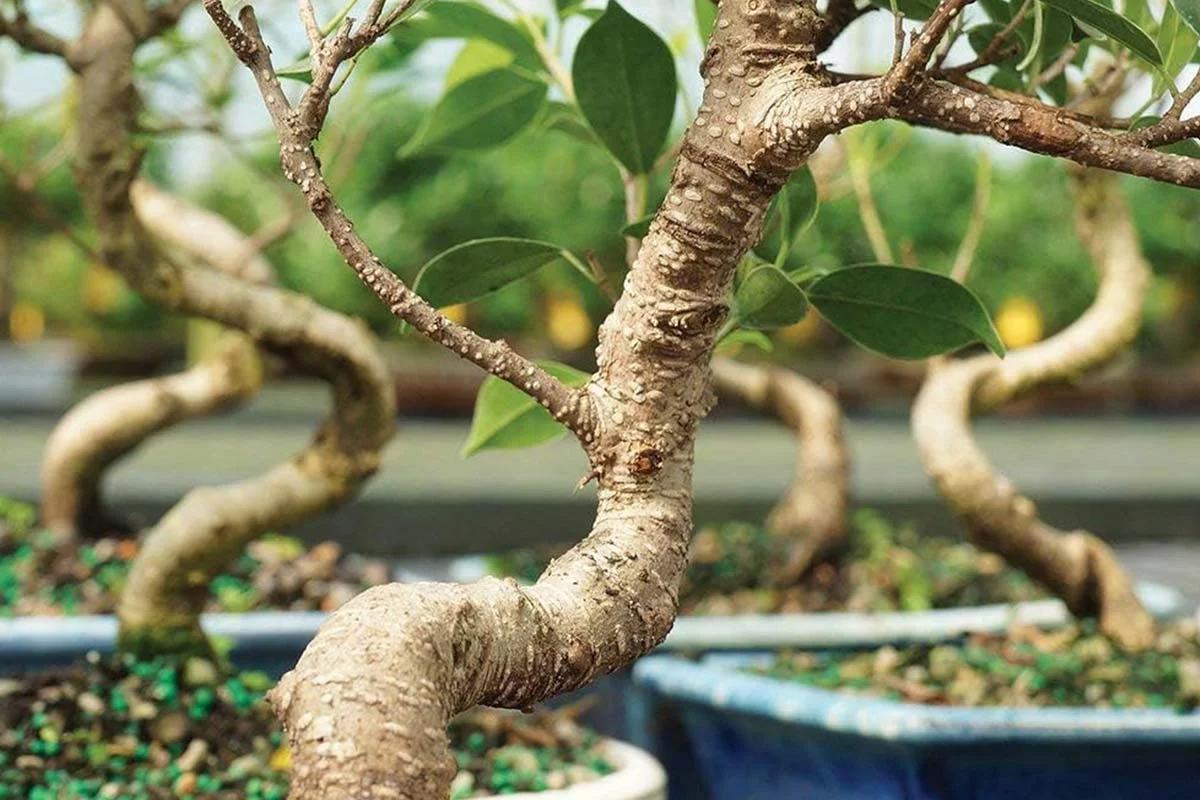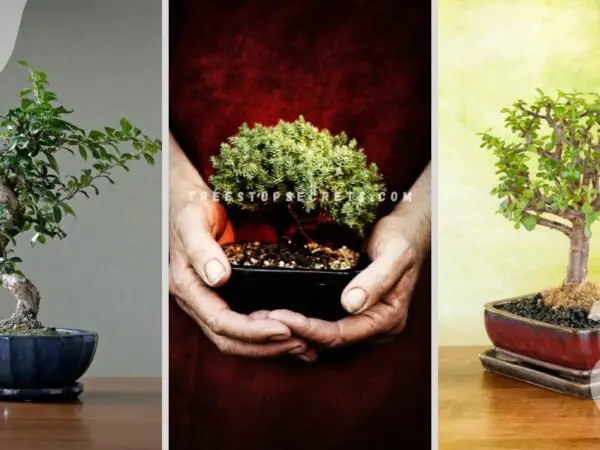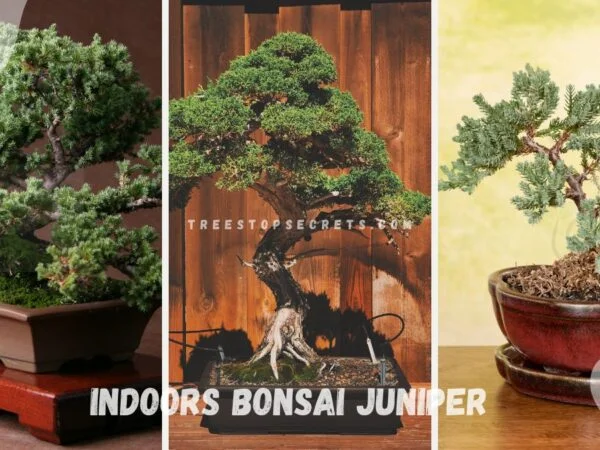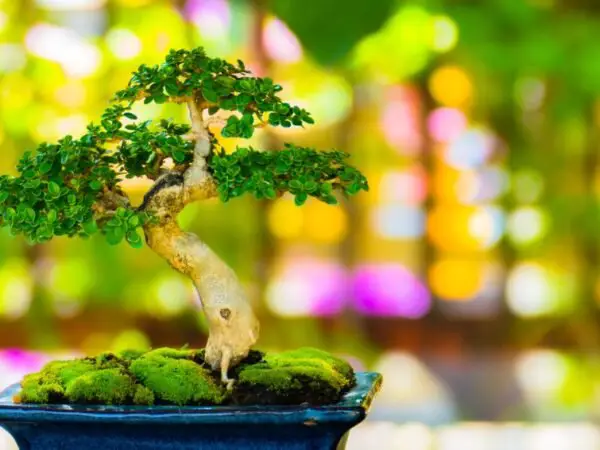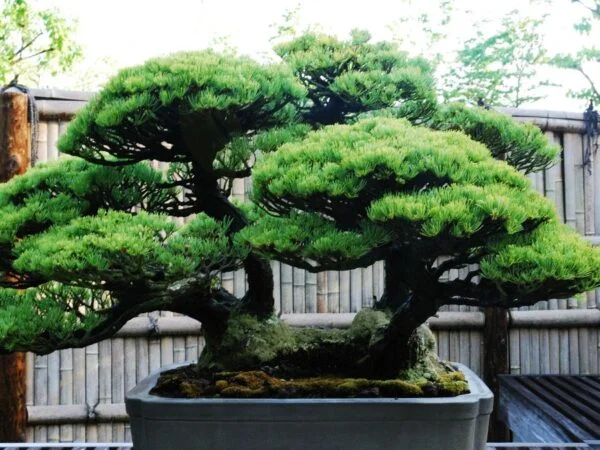The Ficus Retusa, commonly known as the Banyan Fig or Ginseng Fig, is a popular choice among bonsai enthusiasts for its unique trunk and dense foliage. Caring for this plant can be quite rewarding, as it adds a touch of greenery and elegance to any indoor or outdoor space. In this guide, we’ll dive deep into the essentials of Ficus Retusa care, providing practical tips and expert advice to ensure your plant thrives.
Understanding Ficus Retusa
Characteristics of Ficus Retusa
The Ficus Retusa, commonly known as the Banyan Fig or Taiwan Ficus, is a rapidly-growing, evergreen tree characterized by its round, broad-headed shape and glossy, dark-green, leathery leaves. This species is among the most tolerant and versatile bonsai trees available, making it an excellent choice for indoor environments. Its resilience and low-maintenance nature make it particularly appealing to beginners in the world of bonsai.
| Feature | Description |
|---|---|
| Growth Rate | Rapid |
| Leaf Type | Glossy, small, dark-green, leathery |
| Tolerance | High |
| Maintenance Level | Low |
| Indoor Suitability | Excellent for indoor use |
Ideal Growing Conditions
Ficus Retusa thrives best in high light conditions. While it is primarily an indoor plant, it benefits from outdoor placement during the spring and summer months. It is essential to ensure that the tree is protected from temperatures dropping below 45 degrees Fahrenheit at night. During colder months, I recommend placing the tree on a windowsill or a table in front of a light source to provide adequate warmth and light (Bonsai Boy).
| Condition | Requirements |
|---|---|
| Light Level | High |
| Outdoor Placement | Spring and summer |
| Temperature | Above 45°F at night |
| Repotting Frequency | Every other year in spring |
| Soil Type | Basic bonsai soil mixture |
By understanding the characteristics and ideal growing conditions of Ficus Retusa, I can provide the best care for my bonsai tree, ensuring it remains healthy and vibrant.
Watering Practices
Proper watering is essential for the health of my Ficus Retusa bonsai. Understanding the watering frequency and recognizing the signs of overwatering can make a significant difference in my plant's well-being.
Watering Frequency
Consistency is key when it comes to watering Ficus Retusa. I generally start with a watering schedule of every 7 to 10 days. However, this may need to be adjusted based on several factors including the season, plant location, and sun exposure.
| Season | Watering Frequency |
|---|---|
| Spring | Every 7 - 10 days |
| Summer | Every 5 - 7 days |
| Fall | Every 7 - 10 days |
| Winter | Every 10 - 14 days |
During the summer, I find that my tree requires more frequent watering, while in winter, the need decreases. Observing my plant for real-time thirst cues is often more effective than strictly adhering to a calendar schedule.
Signs of Overwatering
Overwatering can be detrimental to my Ficus Retusa, leading to issues such as yellowing leaves that feel spongy to the touch. To prevent waterlogged roots, I ensure that the pot has adequate drainage and adjust my watering frequency based on the plant's growth stage and environmental changes (Gregarious, Inc.).
I look for the following visual and tactile cues to determine if I am overwatering:
| Warning Signs | Description |
|---|---|
| Yellowing Leaves | Leaves turn yellow and may drop off |
| Spongy Texture | Leaves feel soft and mushy |
| Waterlogged Soil | Soil remains soggy and does not dry out |
| Root Rot | Foul odor from the soil due to decaying roots |
To gauge the hydration needs of my Ficus Retusa, I often check the soil moisture using the finger test. If the top inch of soil feels dry, it's time to water. I also ensure that I water the tree until water begins running out of the holes in the bottom of the pot, which prevents the soil from becoming completely dry.
Soil Requirements
Maintaining the right soil conditions is crucial for the health of your Ficus retusa. This section will cover the best soil mixes available and how to prepare a soil mix at home.
Best Soil Mixes
When selecting a commercial soil mix for Ficus retusa, it's essential to prioritize drainage to prevent root rot. Here are some recommended mixes that provide the necessary aeration, drainage, and nutrient supply:
| Soil Mix Name | Key Features |
|---|---|
| Ficus & Palm Potting Mix | Specifically designed for Ficus trees |
| Cactus Palm Citrus Mix | Excellent drainage properties |
| Premium Indoor Plant Soil | Nutrient-rich and well-aerated |
These mixes typically include ingredients like perlite or pumice to prevent waterlogging, along with nutrient-rich components such as compost or peat moss to support the plant's health and maintain a neutral pH level (Gregarious, Inc.).
DIY Soil Preparation
Creating the ideal soil mix for my Ficus retusa at home is straightforward. I focus on combining ingredients that provide moisture retention, drainage, and nutrients. A good starting point for my soil mix is as follows:
| Component | Ratio |
|---|---|
| Organic Matter | 1 part |
| Mineral Components | 2 parts |
Using this ratio, I ensure that the soil is well-draining yet capable of holding enough moisture to keep the plant hydrated without waterlogging the roots. This blend supports healthy growth and helps avoid issues related to improper soil conditions (Gregarious, Inc.).
By selecting the right commercial mixes or preparing my own, I can create an optimal environment for my Ficus retusa to thrive.
Fertilization Guidelines
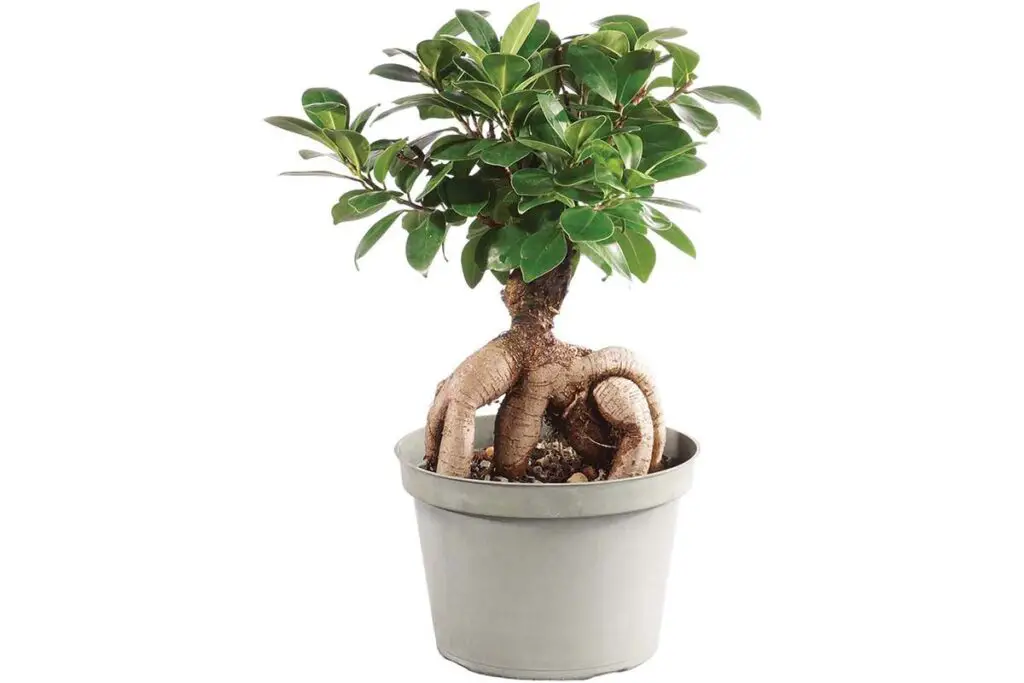
Proper fertilization is essential for the healthy growth of my Ficus retusa bonsai. Understanding when and what type of fertilizer to use can greatly enhance the vitality of my tree.
When to Fertilize
I typically fertilize my Ficus retusa every two weeks during the summer months. This frequency ensures that the tree receives ample nutrients during its active growth phase. In the winter, I reduce the fertilization to once every four weeks, but only if the growth doesn’t completely stop.
For a vigorous tree like the Ficus retusa, one application of fertilizer per month is also sufficient. To maximize nutrient absorption, I first water my bonsai with plain water to activate the roots, and then follow up with the fertilized water (Mistral Bonsai).
| Season | Fertilization Frequency |
|---|---|
| Summer | Every 2 weeks |
| Winter | Every 4 weeks (if growth continues) |
| General | Once a month (for vigorous trees) |
Types of Fertilizers
When it comes to choosing the right fertilizer, I have found that both solid and liquid options work well for my Ficus retusa. Here are the two main types I use:
- Solid Compost Pellets: I place these pellets strategically in the pot. They release nutrients slowly, providing a continuous supply over time.
- Liquid Fertilizer: I mix this with my irrigation water. Liquid fertilizers tend to provide a more immediate nutrient boost.
I always keep in mind that over-fertilizing can be harmful to my bonsai, so I apply caution with the amounts used.
| Fertilizer Type | Description |
|---|---|
| Solid Compost Pellets | Slow-release nutrients, placed in pot |
| Liquid Fertilizer | Mixed with water for immediate absorption |
Following these fertilization guidelines helps ensure my Ficus retusa remains healthy and vibrant.
Pruning and Wiring
Caring for my Ficus Retusa bonsai involves regular pruning and wiring to maintain its shape and promote healthy growth. Below are the techniques I use for effective pruning and wiring.
Pruning Techniques
Pruning is essential for maintaining the desired shape of my Ficus Retusa and promoting new growth. Regular pruning helps to manage the size of the tree and encourages the development of smaller leaves. I follow these key practices for pruning:
- Regular Pruning: I prune my Ficus Retusa regularly to retain its shape. This involves trimming back new growth and shaping the tree to my desired style.
- Leaf Pruning: To reduce leaf size, I perform leaf pruning. This technique involves cutting back larger leaves, which encourages the growth of smaller leaves over time.
| Pruning Frequency | Action |
|---|---|
| Every 4-6 weeks | General shape maintenance |
| Mid-summer | Leaf pruning to reduce leaf size |
Ficus trees are known for their ability to tolerate root-pruning very well. I find that repotting them during spring every other year using a basic bonsai soil mixture helps maintain their health (Bonsai Empire).
Wiring Methods
Wiring is another crucial aspect of shaping my Ficus Retusa bonsai. It allows me to bend and shape the branches as desired. Here are the methods I use for effective wiring:
- Wiring Thin to Medium Branches: I find it easy to wire and bend thin to medium branches of the Ficus Retusa due to their flexibility. I wrap aluminum or copper wire around the branches to achieve the desired angles.
- Timing: I apply wiring during the growing season when the branches are more pliable, ensuring that I do not damage the tree.
| Wiring Type | Material | Benefits |
|---|---|---|
| Aluminum Wire | Lightweight and easy to manipulate | Allows for gentle bending without damage |
| Copper Wire | Stronger and retains shape better | Ideal for thicker branches |
Regular wiring helps to create the desired structure and aesthetics of my bonsai. It is important to monitor the wire to prevent it from cutting into the bark as the tree grows. I remove the wire once the branches have set in their new position.
By employing these pruning and wiring techniques, I ensure that my Ficus Retusa remains healthy and visually appealing.
Common Pests and Diseases
Caring for my Ficus Retusa bonsai has taught me to be vigilant about potential pests and diseases that can affect its health. Identifying issues early helps ensure the longevity and beauty of my tree.
Identifying Issues
When inspecting my Ficus Retusa, I look for several signs that may indicate the presence of pests or diseases. Common issues include:
| Issue | Symptoms |
|---|---|
| Insect Infestation | Visible insects on leaves or branches, sticky residue (honeydew), and webbing. |
| Anthracnose | Greasy yellow spots on leaves that spread over time (Plants for All Seasons). |
| Bacterial Leaf Spot | Small yellow and black spots on leaves that can turn brown and fall off (Plants for All Seasons). |
| Fungal Diseases | Symptoms vary but may include leaf spots, wilting, or root rot. |
Key pests to be aware of include aphids, spider mites, and mealybugs. Regular checks on the undersides of leaves and branches can help catch infestations early.
Treatment Solutions
If I find any issues, I take immediate action to treat them. Here are some effective solutions:
| Problem | Treatment |
|---|---|
| Insect Infestation | Use insecticidal soap or neem oil to eliminate pests. Apply according to package instructions. Products can be found at Bonsai Boy. |
| Anthracnose | Apply fungicide and remove infected leaves. Prevent future outbreaks by watering directly into the soil and avoiding misting on damp leaves. |
| Bacterial Leaf Spot | Remove infected leaves immediately and ensure proper watering practices to avoid excess moisture. |
| Fungal Diseases | Identify the specific fungus, and apply the appropriate fungicide as recommended for the type of infection (UF/IFAS Extension). |
By maintaining a routine of inspection and treatment, I can keep my Ficus Retusa healthy and thriving. Understanding these common pests and diseases has made me more confident in my bonsai care journey.
Final Thoughts: Mastering Ficus Retusa Care
Caring for a Ficus Retusa can be a highly rewarding experience, especially as you see your plant thrive and take shape. By understanding the basic needs of this unique species, from watering and pruning to providing the right amount of light and nutrients, you can create a beautiful bonsai or houseplant that brings joy and a touch of nature to your home. Remember, patience and attention to detail are key. With the right care, your Ficus Retusa will grow strong and healthy, becoming a stunning centerpiece in any space.
FAQs about Ficus Retusa Care Guide
Q: How often should I water my Ficus Retusa?
A: Water your Ficus Retusa once a week during the growing season. The soil should be moist but not waterlogged. It's important to allow the top inch of soil to dry out slightly between watering sessions to prevent root rot. In winter, reduce watering frequency as the plant's growth slows down.
Q: What type of soil is best for Ficus Retusa?
A: Ficus Retusa thrives in well-draining soil that retains some moisture. A mix of potting soil, perlite, and a bit of peat moss works well. The soil should allow excess water to drain away quickly to prevent root rot while retaining enough moisture for the plant’s needs.
Q: How do I prune my Ficus Retusa for bonsai?
A: To prune your Ficus Retusa for bonsai, start by removing any dead or yellowing leaves. Trim back long shoots to maintain the desired shape, and cut just above a leaf node to encourage new growth. Prune in late winter or early spring for the best results, and avoid heavy pruning during the growing season to minimize stress on the plant.
Q: Can Ficus Retusa grow indoors?
A: Yes, Ficus Retusa is an excellent indoor plant, especially as a bonsai. It prefers bright, indirect sunlight and thrives in a warm, humid environment. Regularly misting the leaves and ensuring proper ventilation can help keep indoor Ficus Retusa healthy.
Q: Why are the leaves on my Ficus Retusa turning yellow?
A: Yellow leaves on a Ficus Retusa can indicate overwatering, poor drainage, or inadequate light. Check the soil moisture level to ensure it's not too wet, and adjust watering frequency if needed. Also, make sure your plant is receiving enough light, and consider moving it to a brighter location.
Q: What pests commonly affect Ficus Retusa, and how do I deal with them?
A: Common pests that affect Ficus Retusa include spider mites, aphids, and scale insects. To deal with these pests, regularly inspect your plant and clean the leaves with a damp cloth. You can also use insecticidal soap or neem oil as a natural remedy. Ensure good air circulation around the plant to prevent infestations.
Image Source: Paid image from CANVA

